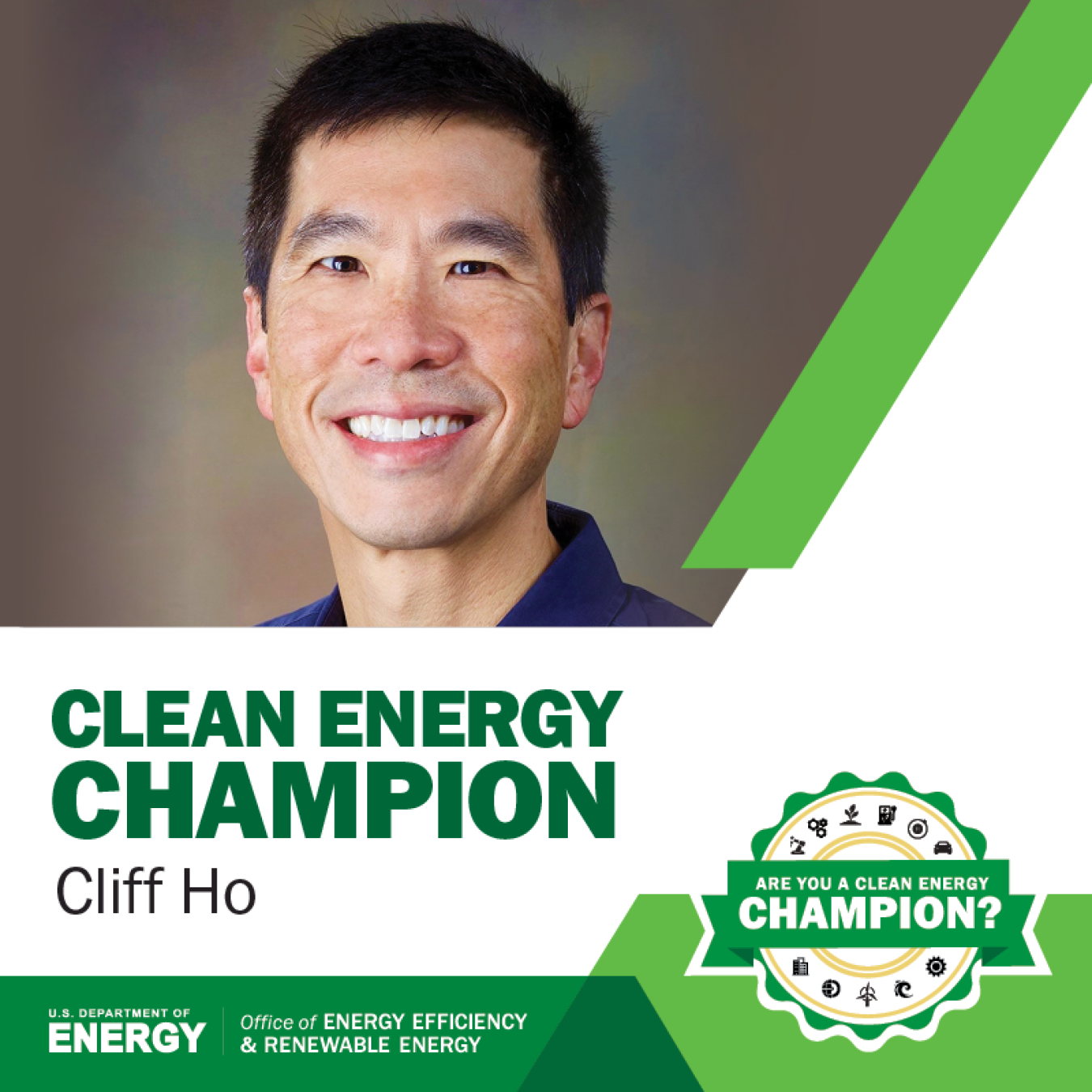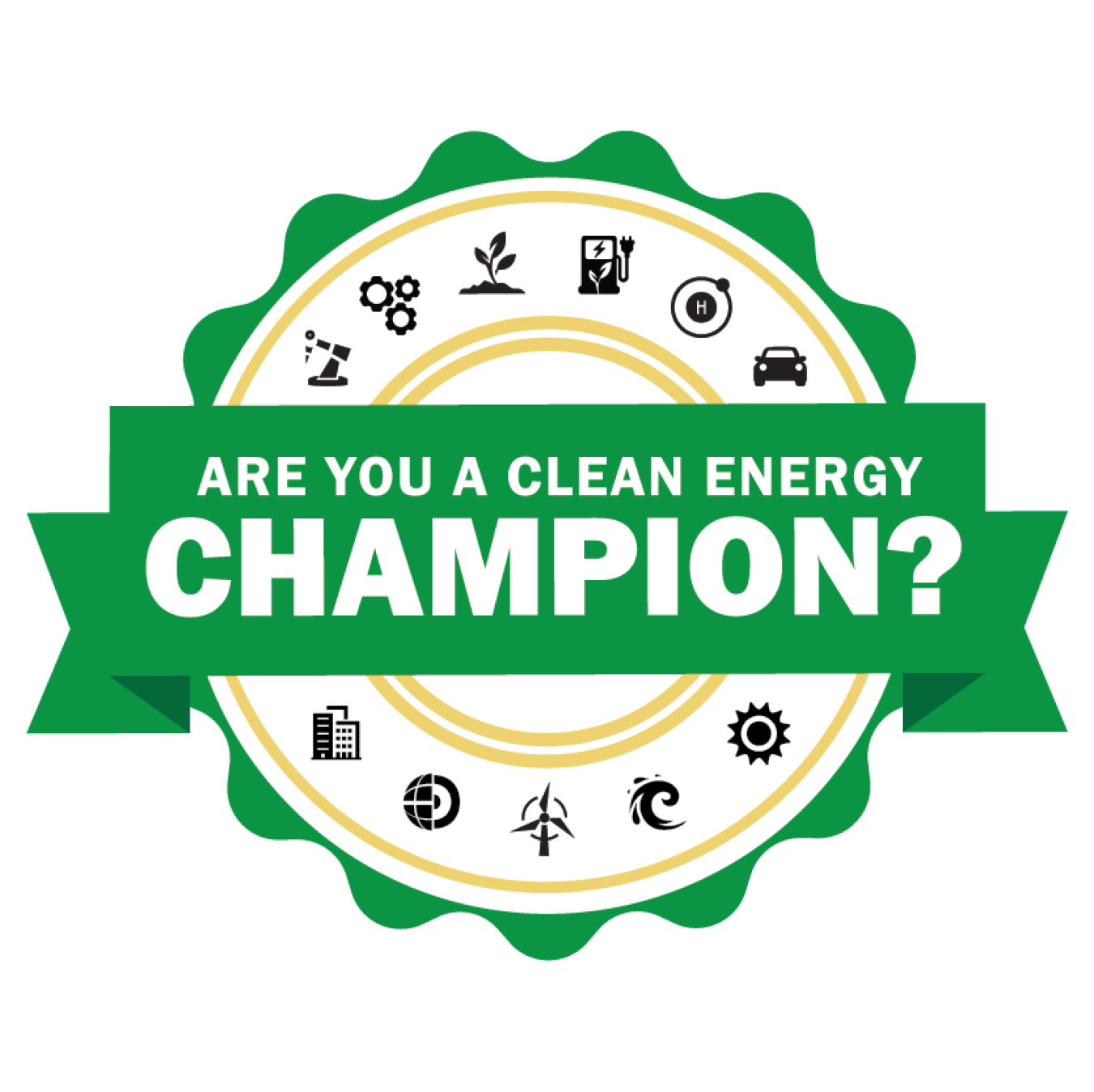This is the eleventh in a series of stories about Clean Energy Champions—real people who are taking action to support or join the transition to a clean energy economy. Their stories illustrate the many ways you, too, can become a Clean Energy Champion.
A 2008 softball game turned Cliff Ho into something of a rock star in the field…of solar energy. This was unexpected, considering Ho’s field of expertise was ground and water contamination. But that game put him on a new path, and he invented a tool that is changing industries and could save lives.

Ho is a mechanical engineer and has been a scientist at Sandia National Laboratories since 1993. When he started working, he investigated how burying nuclear waste might affect the environment and human health. He also helped develop environmental-monitoring sensors and made ultraviolet lamps work better for water treatment and distribution systems.
Then he played softball with Nate Siegel. Siegel worked in concentrating solar-thermal power (CSP), which uses mirrors to capture sunlight to produce clean power and heat, and also provides long-term energy storage. Ho’s background is in heat-and-mass transfer and thermal fluid sciences. CSP was right up his alley, and he didn’t know it.
Siegel invited Ho to join his project and develop a particle receiver model for a CSP power tower system. In these systems, mirrors focus sunlight onto a receiver at the top of a tower. The receiver’s heat-transfer fluid can deliver energy to a turbine for electricity production or be stored for later use.
Siegel’s team sought to replace the heat-transfer fluid with particles, which allow for drastically higher temperatures that enable more efficient electricity production, but it wasn’t clear if the mirrors could reliably heat the particles. For years, Ho modeled, tested, and improved the heat transfer of the particle receiver.

Clean En∙er∙gy Cham∙pi∙on
/klēn/ /ˈenərjē/ /ˈCHampēən/
noun
1. A person or group that takes action to support or join the transition to a renewable energy economy, with the knowledge that reducing carbon emissions provides daily benefits to every American so they can live happy and healthy lives.
That work led to a $25 million award from EERE’s Solar Energy Technologies Office (SETO) to begin constructing a next-generation particle-based CSP pilot facility this year. Particle-based CSP could play a major role in industrial decarbonization. In addition to electricity, it can provide high-temperature heat for industrial processes—chemical processing, cement manufacturing, iron and steel production, and green hydrogen production—that use fossil fuels.
If Ho hadn’t switched gears and found solar, we might not have the clean energy achievement he’s most proud of: a tool that maximizes energy production while shielding pilots and air-traffic controllers, motorists, and others from hazardous glare from photovoltaic (PV) solar panels. The tool is commercially available, and its software uses Google Maps, so anyone planning to install a PV system can find out when and where glare will occur every minute of the year.
The Federal Aviation Administration required the tool for airport PV installations, and nearly 100 countries have used it. Ho even used it to help him design his new house—the neighbors have large vertical windows—and the tool indicated when and exactly where he would see glare. Ho developed the tool with about $1.5 million in funding from SETO and received a prestigious R&D 100 Award in 2013.
Ho recently expanded his role as senior scientist to work for the director of Sandia’s new Climate Change Security Center, which focuses on climate change awareness, mitigation, adaptation, and intervention. Since most industrial energy use is attributed to heating, he’s looking at using CSP to provide industrial-process heat and other ways to reduce emissions.
Meanwhile, at home, Ho’s 3-kilowatt PV system has been “offsetting all our electricity needs annually for the last 13 years,” he says. And in the new house, he installed a charger system for a future all-electric vehicle. His daughter is driving his 2005 hybrid, which is going strong with nearly 200,000 miles after one battery change. She knows, like her father does, that clean energy and sustainability go hand in hand.
